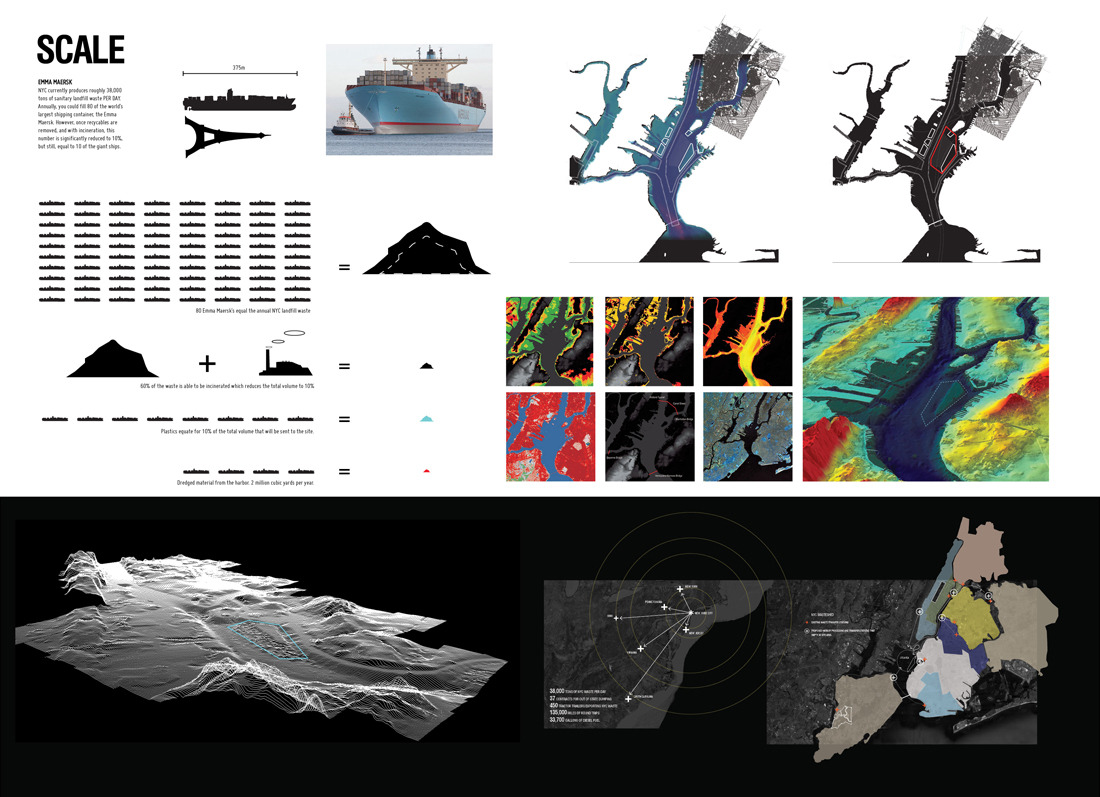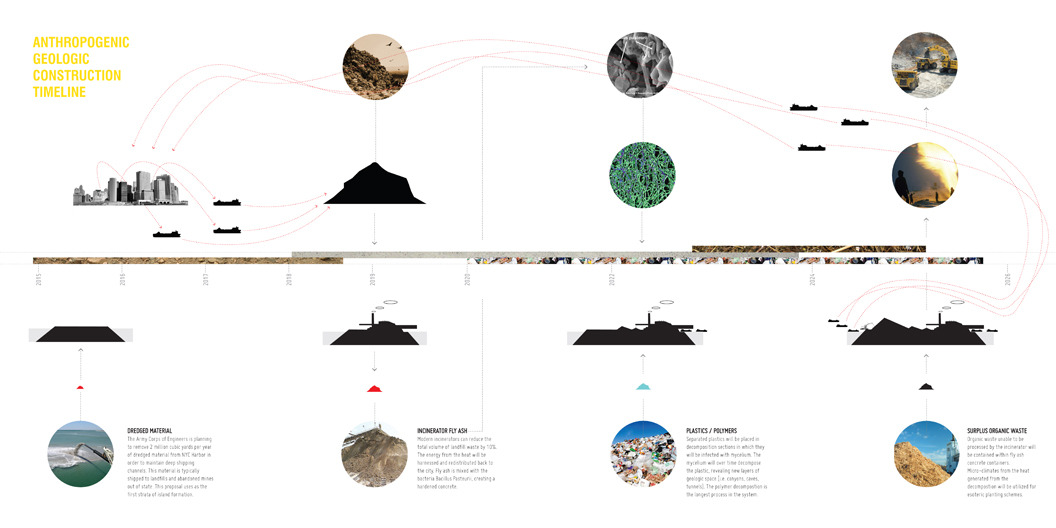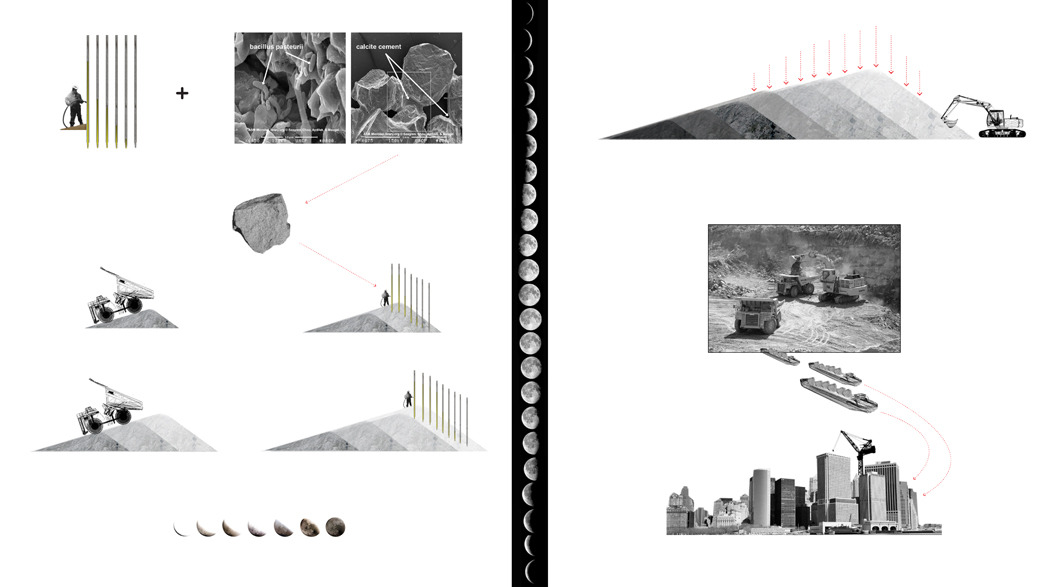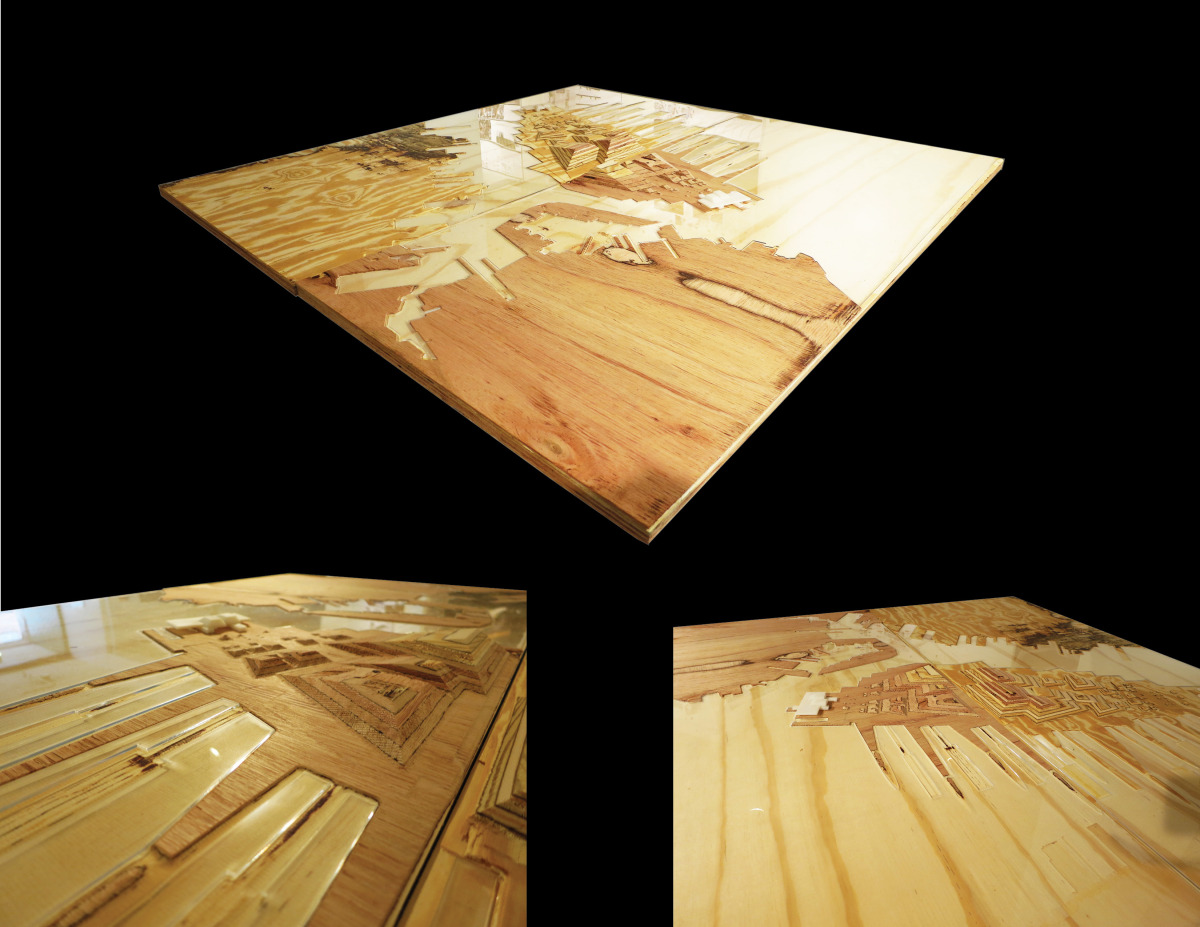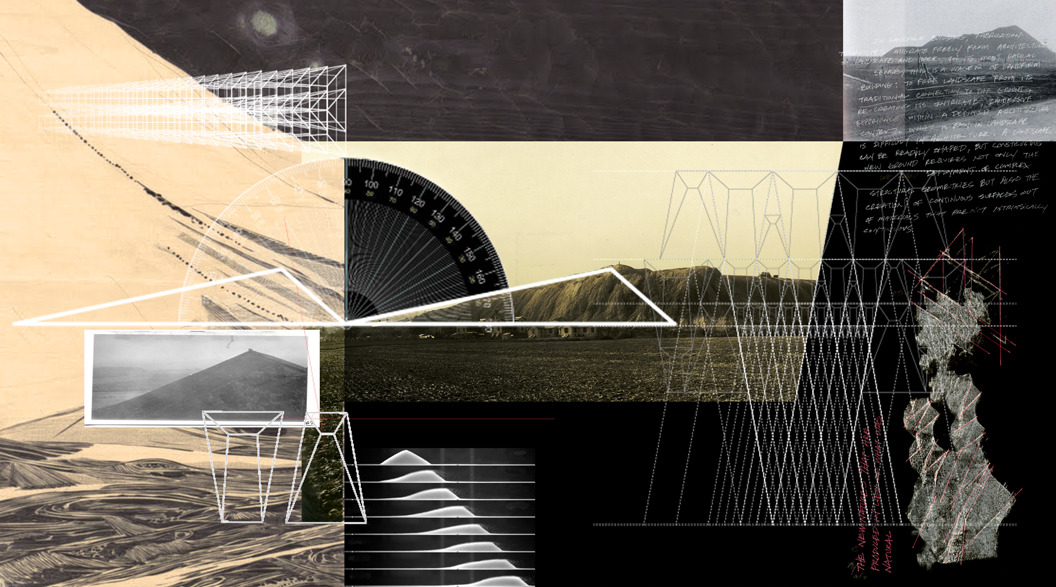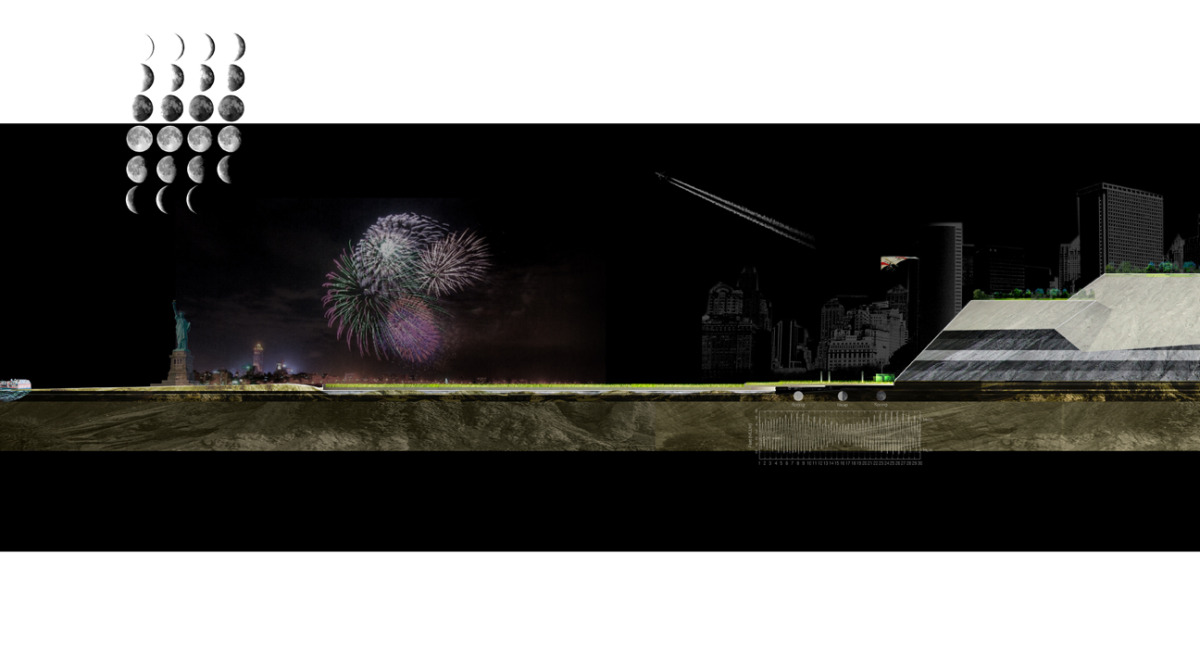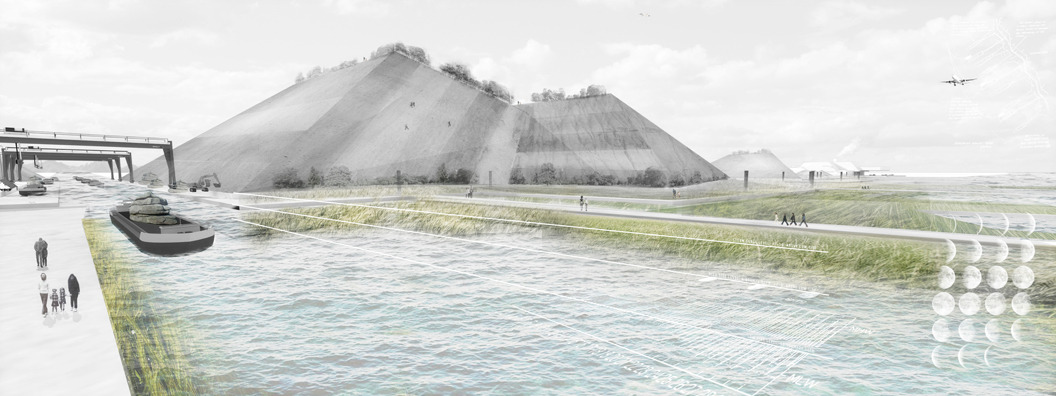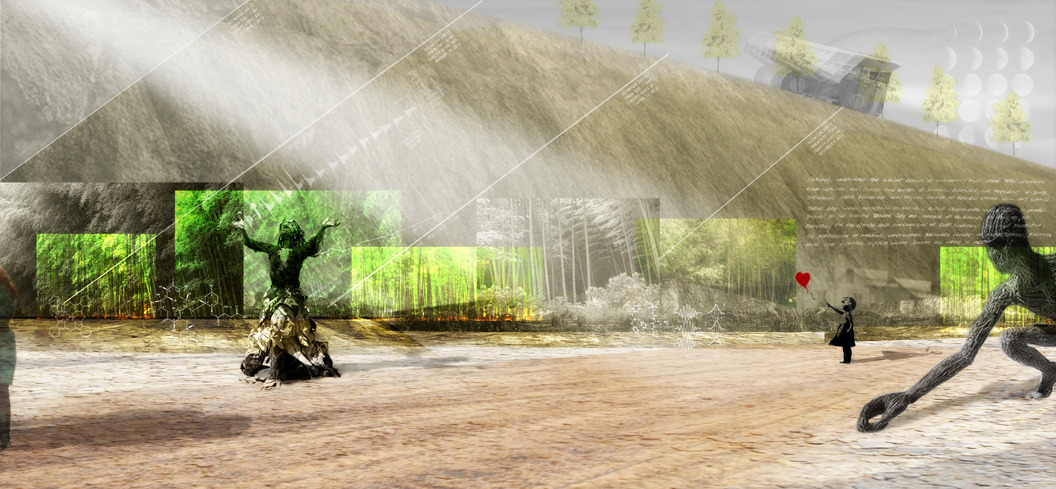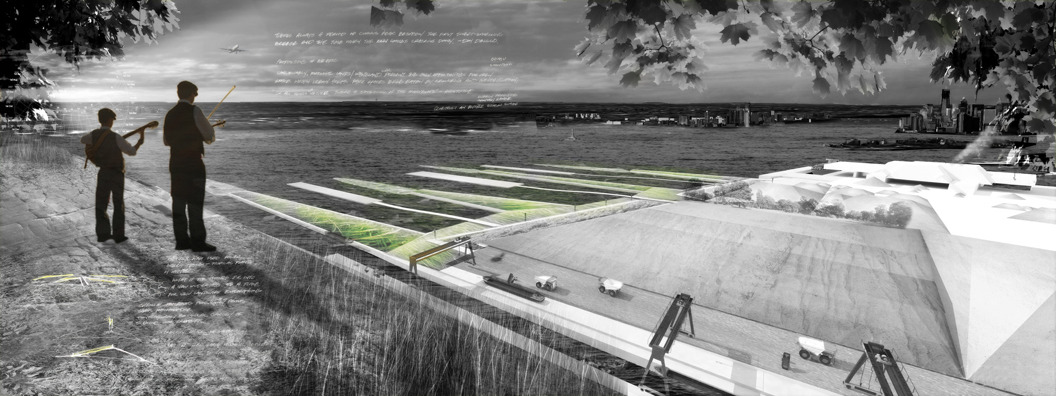[Pressure and Deformation Diagram. Image by Adam E. Anderson]
I wanted to share some of the thesis work I did while at the Rhode Island School of Design. For me, it is the beginnings of what I hope to become the creation of a neo-nature. Please enjoy and share:
Metabolic Tectonic | Terraforming Waste into Our Perpetual City Organism [PDF Download]
We are a geologic force.
We make marks visible from space.
We can create our own geology.
This proposal is a designed geologic cycle, the geology being waste.
More specifically dredge material from New York harbor, and fly ash from incinerated solid waste.
I designed a mountain that breathes the city’s waste,
and fuels its growth.
These materials come together and through a process of accumulation, sorting, piling, bio-remediation, and solidification through bacterial calcification, over time, grow into mountain.
The mountain has no finality. The pressure and compression caused by its growth create stone. Stone that will be harvested as the main building material for the city, completing the cycle.
Waste to mountain, mountain to stone, stone to building........
I am unapologetic to this growth and to waste.
This thesis explores waste not as marginal byproduct of a city’s function, but as an integral and perpetual metabolic component.
Infrastructure as inhabitable organism. Landscape as Machine.
I question ubiquitous ideas of nature, especially in the city.
We can design our own neo-nature.
This is first done by either dismissing, or accepting everything, as nature.
This thesis is a study of this dismissal.
[Image by Adam E. Anderson]
To begin to critique.
Infinitely amazed by both natural phenomena, and the artificial, the line between the two started to blur for me and I lost an understanding of these as separate entities. This was a wonderful moment, as I began to see everything as nature, or nothing as nature, the word simply lost meaning, but the beauty of what we make and destroy is equally as beautiful to what nature makes and destroys.
This thesis was in part an opportunity to explore the manifestation of these ideas into a visionary but believable concept in hopes others will soon join in sharing and developing a neo-nature. If it’s conceivable to build an inhabitable mountain of infrastructure within a centralized location within a city, then truly anything is possible, and landscape architects should relish in knowing that tradition and contemporary restraints, while important should not restrain radical thought and expression. I believe this to be an absolute necessity for the transformation of the profession.
[Angles Diagram. Image by Adam E. Anderson][Mountain Formation Diagram. Image by Adam E. Anderson]
I have been fascinated by the speed in which technology develops, and how these technologies and sciences might be utilized by landscape architects. Particularly the possibilities of large scale 3D printing and bio-engineering of plant life, both have inexhaustible spatial capabilities. An idea undeveloped within my thesis, was that the mountain would be built by an army of multi-functional drones, acting as a giant 3D printer, controlled through a mainframe by team of landscape architects and engineers. A highly detailed digital 3D model would be the data source for drone programming and their movement determined by its form. Rather than trying to recreate idyllic nature, I can imagine bioengineered plants to allow us to create environments that could function better than nature, more efficient and capable of resilience in face of the complexities of urban systems. As of recent developments, these are very achievable ideas, and worthy of further engagement.
[In the Canyon. Image by Adam E. Anderson]
This proposal is however fraught with difficulties of a political, practical, infrastructural, and economic nature. The inclusion of the public into an infrastructural system proved increasingly complicated. Whether the infrastructure should be simplified to accommodate inhabitation or additional layers and networks be added is a level of detail that needs to be further explored.
At 300+ acres, and with its centralized location, the question of “what else can it do” is something I hope to continue to study. I briefly touched on this in the “Program Potential” diagram but the spatial consequences of a more complex program holds exciting possibilities in developing new kind of esoteric park. A place in which the fear, meaning the positive experience of it found in the wild might be replaced with fear of daunting mechanical movements and unfamiliar biological reactions. What this looks like, and the best way for people to experience this, I’m still figuring out.
While I believe the siting of the mountain on the Bay Shore Flats to be just, I still question the location of the two incinerators. Particularly the southern facility, which would be susceptible to storm waves and would need further protection. As the shoals extend farther south into the channel, with further design exploration and modification to the planned waste barge shipping routes, this is achievable. The choice to use incineration was based on research showing with some speculation of further technological advancements in their operation, to be the most efficient choice for reducing a city’s waste volume into a manageable quantity. And there is a question of the fly ash, the non-toxic but certainly non-healthy by-product of incineration and how it is to be properly managed when exposure to the public is a possibility. Further study could be done into the capabilities and limits of dredge as a major material resource for maritime cities, as well as material potential in recycling other non-biodegradable waste such as metals and plastics. Additional city waste product such as sewage and e-waste were intentionally not addressed in this thesis due to the complexities associated with their treatment that time simply did not allow.
The form of the mounds, derived from the study of the formation of the angles of repose of similar material types is an area I aim to continue to push to achieve more radical form making a deeper relationship to program and site environmental factors of erosion, deformation, accumulation and decay. A more intense understanding of material deformation will allow the material itself to become more widely used, and for others to also continue to manipulate its form for use in creating public space.
I see this thesis as just the beginning of an long exploration into the ugly, and the design and creation of a Neo-Nature.






